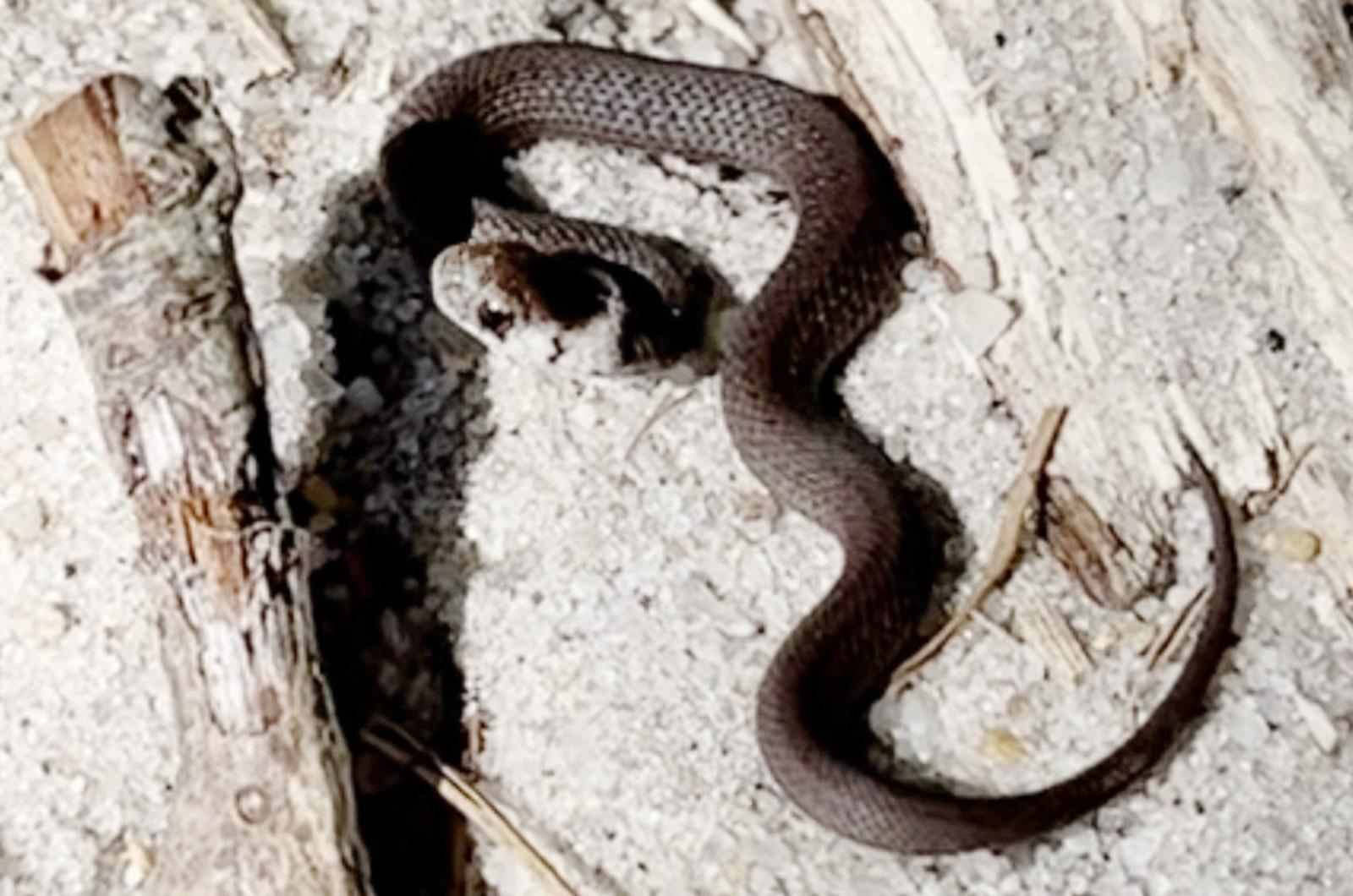“Wait a second” might have been Megan Draheim’s first thought when she saw a small snake on a trail at Felix Neck Wildlife Sanctuary.
Megan serves as the sanctuary’s seasonal program specialist — and she does it extremely well, as you will soon see. She realized that this snake was a bit different than others she has observed on her daily tours. After a bit of initiative involving examination, picture-taking, crowd-sourcing, identifying and expert vetting, she uncovered the snake’s identity. With the final finding, Megan might have exclaimed, “Wait . . . a second!”
It was only the second sighting of special snake that was first observed on-Island just three years ago. A very rare snake, indeed. Megan’s fabulous find was the second confirmed sighting of a Dekay’s brownsnake on Martha’s Vineyard.
Though amateur and professional herpetologists have been looking for the Commonwealth-common species on the Island for more than 50 years, it wasn’t until 2020 that Dekay’s brownsnake was finally detected on Martha’s Vineyard, when it was positively identified in Aquinnah. And up until last week, there were no other sightings. Now only Nantucket can lay claim to being devoid of Dekay’s.
So, what or who is Dekay’s brownsnake?
This brownsnake can be brown, reddish brown and sometimes gray. It is a small snake, generally less than 14 inches long, so it is often mistaken for a juvenile of another species.
One unique identifying characteristic is its keeled scales. If you were able to look closely — and you can, since this snake rarely bites and lacks venom — you might observe the ridge down the center of each scale.
Scientists suspect that the keeled scales serve to keep the snake camouflaged because they are less luminescent that unkeeled scales. This allows these snakes to hide in sunlight. The keels also assist with movement and climbing. Other species, such as vipers, have serrations on their keels that create a buzzing or sizzling sound when rubbed together and serve as a warning to their predators. This music-making ability, more often credited to insects, is called stridulation.
Predators that seek to destroy Dekay’s brownsnake include other snakes, birds, small mammals and domestic cats and dogs. The snake itself will dine on slugs and earthworms mostly, and can also eat small frogs, fish, snails and insects.
This brownsnake, Storeria Dekay, is also called a brown grass snake, Dekay’s snake, ground snake, house snake, little black snake, rock snake, spotted adder and spotted brown snake. It does remain a mystery to me why there is no space between brownsnake when referencing it, though I will leave that to the grammar experts.
You’d think that the honor of the naming goes all to Dekay, but that’s not quite so. The common name and scientific name refer to two different naturalists. James Dekay documented the first species of this snake on Long Island in the 1830s, but David Humphreys Storer, Harvard Medical School dean and naturalist of the same period, received the honor of having the genus — Storeria — named for him.
No matter the name, naturalists and regular folks have often been confused about its identity. The Orianne Society, a reptile and amphibian conservation organization, called this slitherer “one of America’s most misidentified snakes.”
It has also been noted that, with its elusive nature, it notoriously flies under the radar. Megan had reason to take a second look and give this creature a second thought. She has the experts on her side — and has well-earned accolades for finding this secretive serpent.
Suzan Bellincampi is Islands director for Felix Neck Wildlife Sanctuary in Edgartown and the Nantucket Wildlife Sanctuaries. She is also the author of Martha’s Vineyard: A Field Guide to Island Nature and The Nature of Martha’s Vineyard.




Comments
Comment policy »